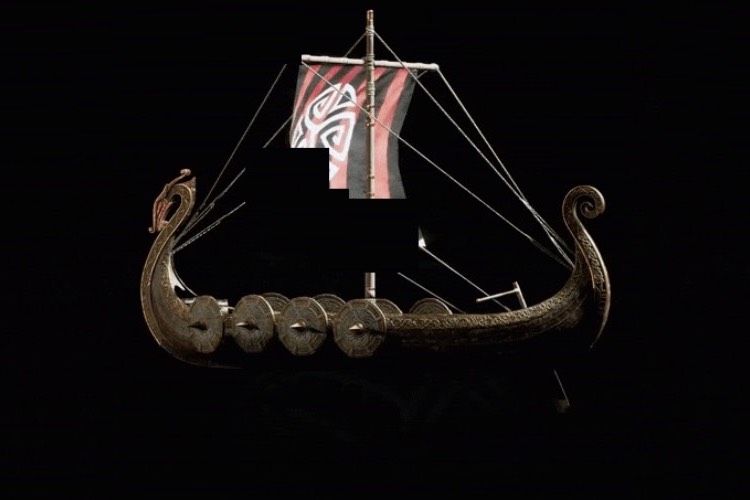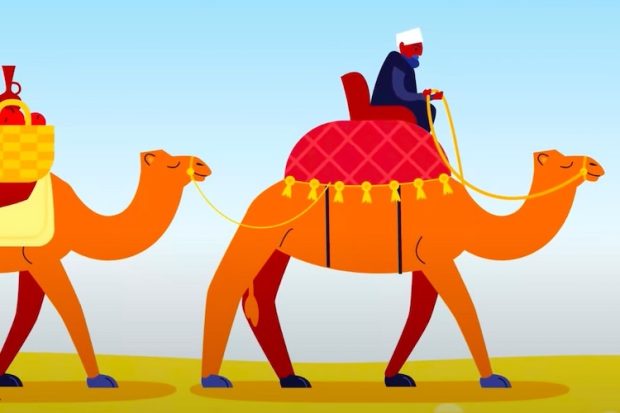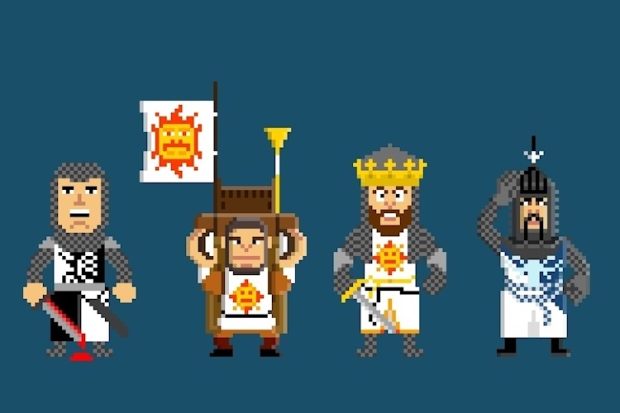History of Predicting Internet Future
MIT Senior Research Scientist David Clark on contention in communication industry, alternative to the Internet...

What today, we call ‘Vikings’ should more properly be called ‘Scandinavians of the 9th, 10th, and early 11th centuries’, because ‘Vikings’ means ‘pirates’. When we talk about Vikings today, we mean not only pirates but also women, children, and elderly people, not just the people who went on the Viking raids. The feminine noun ‘Viking’ means an ‘armed raid’ or ‘army expedition’. So a Viking is a pirate or a robber. Today by the term “Viking,” we mean every Scandinavian who lived during those two and a half or three centuries in the early Middle Ages. So we have to distinguish the narrow sense of the Old Norse, that of ‘Viking’ meaning just a robber, and the general modern sense of the word.
The countries from which the Vikings originally came are today’s Denmark, Sweden, and Norway. It might be better, however, to say Norway, Denmark, and Sweden, because Sweden is not as big a part of the Viking Age. The Swedes were important for the Russian side, but the Western European Viking Age was Norwegians and Danes. They interacted with all the surrounding people in the East: the Swedish Vikings (or Varangians, as we call them) interacted with Finland, where they settled, with the Baltic states, especially today’s Estonia, where they also had settlements, and course, with today’s Russia and even Belarus.
In the West, they interacted with their neighbors, mainly the Frisians and the Saxons (today’s Germany). They even interacted with France because, at the time, the Franconians were still a part of the Carolingian Empire. Together with the English and the Irish are the main groups. The English, the Irish, and the Frisians mainly regarded them as antagonists: the Vikings were viewed as robbers and plunderers. The Saxons, on the other hand, was not a threat in that sense of the word because there were no direct land-based incursions into Saxony. For the Carolingian Empire, they were just raiders, like the Northern African or the Corsican pirates.
What did the Vikings trade? First of all, slaves, because the slave trade was the most lucrative. We know from the Frisians that the Vikings were raiding them just to capture people, and the same happened in Ireland as well. And preferably, these people were ransomed by their own relatives because that meant that the Vikings saved the transport costs. But if the captives were not ransomed, they were taken through many countries, starting from Ireland, then the Orkney Islands, then southern Denmark, and then moved to the East, where they were traded again in the Baltic to be moved to the Umayyad Empire, the Muslim Empire in the Middle East, and to be sold as slaves there. That is a long way; that’s why the Vikings preferred these people to be ransomed by their own relatives.

There were other trading goods as well. Norwegian whetstones were traded to the South because whetstones of this quality were not present in Germany. Amber was always a famous trading item. But there were actually more goods going from the South to the North. Namely, glass, metal, and weapons – were the main goods, but even wine or oil was traded along the Rhine to the North Sea and across in vast vessels. And when you have very little, you have to trade yourself so that the trade deficit is compensated by plundering.
Settling down for agriculture was a later stage of the Viking Age. In the 9th century, we had the Vikings who settled in Germany; we also had a case of Normans in Normandy in the 10th century or in the late 9th century in England, where the Vikings wanted to settle. We also know that both inside and outside Normandy, what the Vikings offered was to be a defense force: if they got to land, they defended the country for it. There’s no evidence that they started growing crops from the beginning. Crops needed a more settled lifestyle. Their plans were mostly dictated by the situation. As for raising cattle, they could start it very easily: one could just steal some cows and go on from there.
The overpopulation theory of Scandinavia, which tries to explain the Viking Age, is wrong insofar as most Vikings could stay at home and have enough land to sustain a family. But it was not profuse enough, especially for younger sons who did not inherit very much because the eldest son got everything. If there was no work, no way of income, you went abroad and tried to find it somewhere else because of the social set-up — primogeniture. The oldest son got more or less everything, at least all the land. And therefore, there was not much for the younger sons to do apart from being in the army. And then there was, of course, the call for warriors. It’s a mercenary type of employment: you sell your strength to the one who’s prepared to pay. And that’s what they did in England; they said,” We defend your country, but we want to land”.

There were two other reasons for what today we would call ‘travel’. One was to discover new land not just for the sake of discovery, like in the 19th century, but for the sake of finding land which is arable, like Iceland, the Faroe Islands, and Greenland, where they could settle and live. Ideally, that land would be uninhabited so that they wouldn’t have to fight for it. But if they had to fight, then that was okay as well.
The last reason is quite different, and there’s a wonderful story of a Viking called Hasting and another one called Bjorn, who plundered so much in England and later in today’s France that they decided to go for a journey just for the sake of it so that people could talk about it later. That was a journey not for money, not for land, but for the story. And that’s also something very typical of the Vikings: it was very important that people talked about you. That’s because the pre-Christian Vikings did not believe in a soul as people today do. They believed that the only thing that survived of you was what people would tell about you: the Sagas, the poems.
It was a very disjointed agrarian society. If we look at the geography of Norway, there were individual small settlements, which were, early on, united in what were called small kingdoms. They were relatively small-scale. In Norway in the 870s and in Denmark in the 960s, they finally got a king. In Norway, it was Harald Fairhair in Denmark; it was Harald Bluetooth who united these countries forcefully into those kingdoms that we still have today in Denmark and in Norway. In Sweden, it was slightly different because it took much longer: Sweden was only united in the 12th century to form what we call Sweden today. Within the Viking Age, and it’s one of the big achievements of the Viking Age, kingdoms emerge as we have them today. Iceland emerges as a free farmer state, and it’s still a republic today, even after hundreds of years of being dependent on Norwegian and Danish states. Norway and Denmark became kingdoms over the course of the Viking Age. It is a very formative age: at its end, we have not only the medieval empires but have what we see today. We have Christian countries and nation-states, although they were not called nation-states at that stage.

The place of women in these societies was particular. Nowhere in Europe did they have such a strong position as in Scandinavia. It may have had something to do with the Viking Age itself because when the men were away for so long, the running of the farms and even the hard work fell to the women along with the slaves. The inheritance law shows it: widows could keep their own money and farms. It has nothing to do with Christianization because, in Scandinavia, it was passed a bit earlier than that. Christianity only helped to establish it legally.
As for the other laws, they were more regional. We know that Norway has four different regional sets of laws. Of course, they were related because Norway had one king. The laws were transferred to Iceland, which tried to improve them several times. For example, the Vikings switched to Christian law in the 11th century. Up until that point, however, the law was more regional than local. There were tiny differences between the way it worked in different places. These laws were not written down – they were memorized in people’s heads, and in that way, it was natural that the differences occurred. But they were related, and in terms of the aforementioned inheritance laws, most of them were very similar. One of the principles of Germanic law was that even if you killed somebody, you could pay to make up for it. So you did not have to be killed yourself – you could pay a certain amount of money and be settled with the family – in theory, at least.

At the beginning of the Viking Age, there was a governing assembly called the Thing, where free men passed judgment. For instance, one might accuse the other, “You have killed my slave. You have to pay so and so”. Then it’s decided, by the group of free farmers, who is to blame and how much is to be paid. Things had a jurisdictional function, in that they decided what was right and wrong, but also a legislative one – amending the law. If this law was no longer right for the community’s purposes, it was changed by common decision. But Things had no executive power. If you were too weak to enforce your law and there was a problem, there might have been a chieftain willing to help you, but it depended on how you secured his help. It could happen that only the king controlled the law, so you would go and complain to the king that you were unrightfully harmed by somebody else or had something stolen.
Regarding social mobility, we know that there was some nobility from the 10th century because people who were close to the king, like in Denmark, thought that they could have some claims to the throne. They even developed an outline area, saying that Jutland was the center of power and that they had some rights to be king or at least some chieftains in larger areas. So these social groups must have viewed themselves as nobility. There were also jarls (or earls), and they ruled large areas, such as today’s Trøndelag, and called themselves earls. They did not want to be called kings because they were trying not to be centralized. So there was a type of nobility, which seems to go back to the late Iron Age, where we see social strata of small chieftains, each having an army of about 60 men. Together they considered themselves a warrior class, but the chieftains would often marry the sisters of other chieftains, and out of that, developed a sort of ‘chieftains class’. It was distinct from the normal free farmers but did not play a major role at the beginning of the Viking Age. Later, however, kings came out of this class.
The conversion to Christianity occurred relatively gently. Based on what was written in the Saga of Olaf Tryggvason, Olaf traveled across Norway and forced the farmers to get baptized by threatening to kill them. In reality, it was probably more gentle. There was such a social and cultural difference between the Christian Empires in England, Ireland, in the Franconian Empire that Scandinavians, since many Danish delegations who came to Aachen or to Ingelheim to meet the German Emperors, could see that these Christian countries were on a much higher cultural level, both artistically and architecturally, and from a civilizational point of view. This must have played a role. There were also deficiencies in the polytheistic religion, namely that it was not very good in the afterlife. You could only come to Walhall (or Valhalla) if you died with a sword in your hand. How many people does that affect, and what percentage of the population? All the rest live in a very nondescript afterlife. And Christianity had some very clear answers! The missionaries taught, “If you are a good person here on earth, you will harvest your reward in the afterworld. And if you have been a bad person here, you will go to Hell”. That’s such a clear thing to say, as opposed to saying that you might go to Hell, or you might go to Walhall if you die this way, and so on. This is a clear and distinct thing. You live forever, and not just if there’s a good story about you: you will live forever no matter what.
There are two major achievements: one is technical, and it was the ships that were developed beyond anything Europe knew before. You could tack these ships against the wind; you could sail very fast in comparison to contemporaries’ crafts. The Vikings do not seem to have had any respect for distances. They would sail to Greenland or down to the Black Sea over the Russian rivers. The latter was a journey of weeks or months and that did not seem to have impressed anybody. The Vikings expanded our horizons so much: to North America, to the Black Sea, to Syria, to Sicily, to Southern France. They were intrepid travelers: when you read that 25 ships set out from Iceland to colonize Greenland, and only 12 or 14 arrived, and the rest sank in a storm, it was considered a matter-of-fact thing; it was not a national catastrophe.

Their second achievement stems from the claims that the Normans actually invented the feudal structure to some extent. We can’t talk about the proper feudal hierarchy earlier than in 10th century Europe, and suddenly in Normandy and in England, it comes into being. The lineage law emerges: you are a vassal, and you have your vassal. This might also be an achievement of the Viking Age, albeit an indirect one.

The sagas were written by the great-great-grandchildren of the Viking Age, i.e., 200 or 150 years later. But the Vikings left runestones and many poems. A king who really achieved something had several court poets who had to compose poems about his great deeds. The more important the king was, the more court poets he had to tell his story. Kings did not write the stories themselves. The Vikings made themselves heard, but they did not write sagas themselves because that presupposes Christianity since only with Christianity did the art of writing (at first in Latin) as well as the knowledge of classical literature, come to the Vikings.
The sagas are, in fact, historical novels. We shouldn’t use them as historical sources. We cannot reconstruct the facts, but the sagas tell us what people wanted to tell about their ancestors, the stories their ancestors wanted to have told about them. That’s why you write about a fictitious king Ragnar – because some Vikings in England thought, “Our father, we think, was called Ragnar from Denmark, and we should retell everything we know about him or anything that we have invented.” That saga came into existence out of these anecdotes much later.

As far as the runestones are concerned, people wrote on them, “So and so set a runestone after the life of his father, who was a great man – a great farmer or a great Viking – and somebody else [name given] carved the runes”. And as soon as the Vikings were Christianized around the year 1000, they added, “…and pray for their soul, by the way, if you pass the stone”. It was to preserve their memory, to make these people immortal like we put a stone in the graveyard. When you do not have a stone, you do not know where the grave is, so the person is forgotten instantly. That’s why Christianity came, this ‘memoria’ – the memory of the people – which is very strong in Christianity. You have people who pray for you after your death, and you give money to a monastery so that they pray for you forever and ever. That very much appealed to the Vikings’ set of mind – that people shouldn’t forget you. Christianity fitted in well with the idea of memory.
The end of the Viking Age most likely has to do with the aforementioned kingdoms. The kings, whether they were the dukes of Normandy, the Normans in England as of 1066, or the kings of Denmark in 965, were not really interested in the gangs of mercenaries moving around, burning and stealing, so the establishment of these kingdoms or dukedoms put an end to it. They built kingdoms and defended them from the outside. They challenged military aggression in wars against neighbors, such as between the Norwegian and Danish kings. The cultural differences, the differences in the trade deficit and in architecture, were no longer as drastic as they had been at the beginning of the Viking Age. As a result, Vikings lost the impetus and returned to a more ‘civilized’ way of waging war on each other in a proper Medieval style.
Edited by Eugene Kozlov

MIT Senior Research Scientist David Clark on contention in communication industry, alternative to the Internet...

Historian Peter Jones on the medieval obsession with relics, Christian heresies and why we shouldn’t reduce ob...

Historian of Art Martin Kemp on Leonardo da Vinci's intellectual contribution to engineering, Madonna Lisa, an...